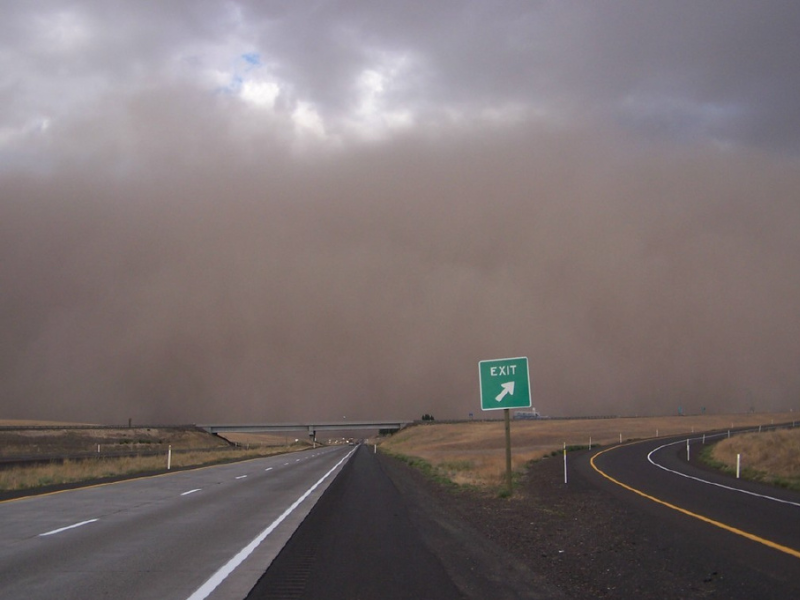
Last week, parts of Eastern Washington experienced a dust storm. While the impact on air quality was marginal, visibility on I-90 became dangerously poor Wednesday evening. These storms form rapidly and with little to no warning, so it’s important to be prepared.
Dust storms occur when strong winds stir up dry soil into dark, dense clouds. While storms typically last only a few minutes, they bring serious health and safety risks.
From spring to fall, dust devils and small dust storms are fairly common across Central and Eastern Washington. So, we want to remind you to follow these steps to stay safe if you are unexpectedly caught in one:
- Cover your nose and mouth – ideally, with an N95 mask
- Go inside, if possible
- Shut windows and doors
- Run a HEPA or DIY box fan air filter
- Avoid strenuous activity
- If driving:
- Shut windows and vents, set the A/C to recirculate
- If you can safely pull off the road:
- Turn off lights to prevent other cars from following and colliding with you
- Set your emergency brake
- If you cannot pull off the road:
- Slow down to a safe speed
- Turn on lights and hazard lights
- Sound the horn occasionally
Dust storms and health
The particulate matter in dust storms – PM10 – is dangerous to human health. Some dust storms raise the amount of PM10 in the air to unhealthy levels for hours at a time, though this is relatively rare in Washington. Children, older adults, and people with respiratory conditions (such as asthma) should take extra care to avoid exposure to dust and poor air quality.
Symptoms of dust exposure include:
- Eye, nose, and throat irritation
- Coughing and wheezing
Contact your healthcare provider if you have any further medical concerns.
Agriculture and construction
Dust storms usually arise from a combination of strong winds and agricultural or construction activity. Drought conditions, like those we are seeing now, make these events even more likely. Over the past few decades, the agricultural industry has increasingly adopted several practices to reduce soil erosion and therefore lower the risk of dust storms.
Air monitoring and emergency alerts
We monitor the outdoor air across Washington for harmful pollutants such as dust.
- Check your local air quality with the AirQualityWA map
- To receive alerts for high wind warnings, sign up for National Weather Service Wireless Emergency Alerts
Local clean air agencies
You can also contact your local clean air agency for more information about dust storms and air quality in your area:
- Benton Clean Air Agency: 509-783-1304
- Ecology Central Regional Office: 509-575-2490
- Ecology Eastern Regional Office: 509-329-3400
- Spokane Regional Clean Air Agency: 509-477-4727
- Yakima Regional Clean Air Agency: 509-834-2050
- EPA Region 10 – Tribal lands

